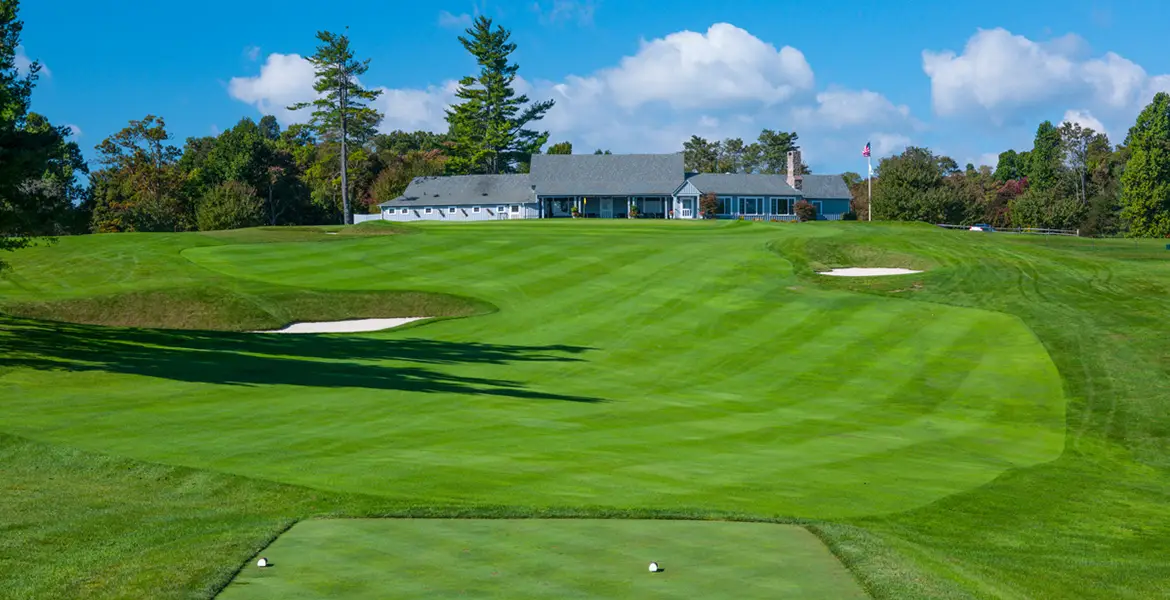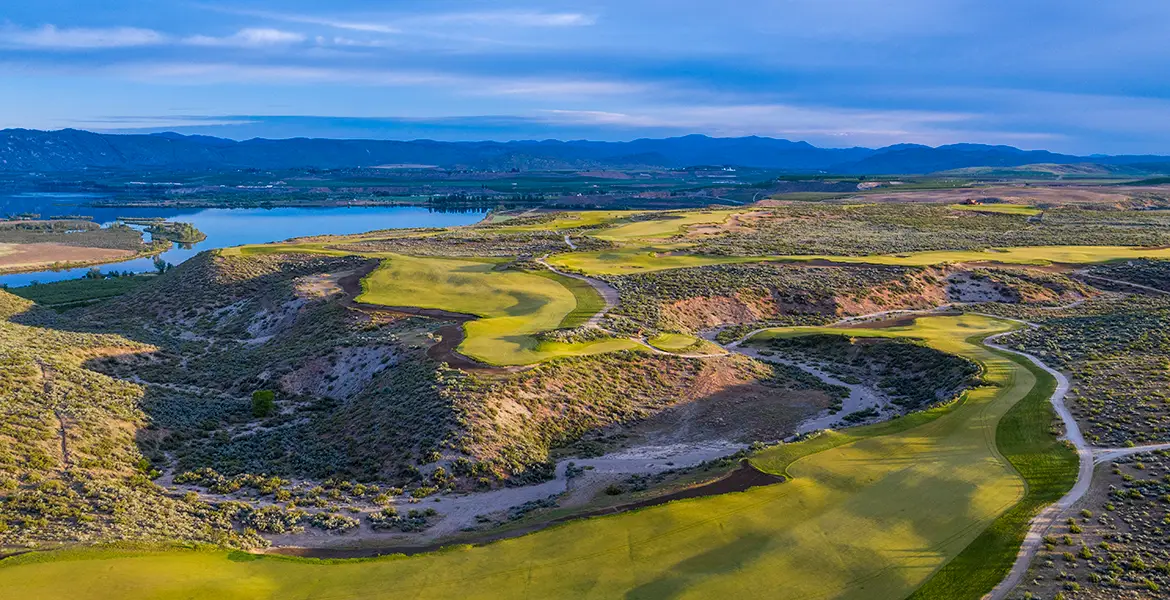By Tony Dear

Back in the mid-to-late 1980s, the CEO of Alabama’s state employee pension fund—Retirement Systems of Alabama (RSA)—hatched an outlandish plan to build multiple golf courses simultaneously throughout the state, a state never before regarded as a golf destination. Nothing like it had ever been conceived, let alone attempted, but this man hoped to attract golf tourists and stimulate economic activity. Absurd, right?
A graduate of Minnesota State University, Mankato where he earned Bachelor’s and Master’s degrees, and later taught business and finance courses, Dr. David Bronner also attended the University of Alabama where he received a law degree in 1971, and a Ph.D. the following year. He then taught more business, finance, and education courses at various graduate schools before becoming Assistant Dean of the Law School at UA. In 1973, at the age of 28, he was given the top job at RSA.
With that level of education, and those qualifications and academic/real life experience, perhaps Bronner could be trusted, and his somewhat wild and unconventional proposal for a golf trail might not be so crazy after all.
Now, a quarter of a century later, with a total of eleven sites and 468 holes and eight major resorts, half a million rounds a year are played on the Robert Trent Jones Golf Trail, and RSA’s assets have grown from about $8 billion to over $35 billion—credit for which doesn’t go to the Trail entirely, but it remains by far the most conspicuous and ambitious of Bronner’s investments.

How to Tackle the Trail
There probably are people—mad golf addicts—that have played all 26 courses in one trip. Such a voyage would mean roughly 85 miles of golf, and over 700 miles of driving, however, so it’s probably best to do it in chunks.
I’ve visited six Trail sites on three separate trips—Ross Bridge in Hoover in 2010 when I played the back tees from 8,191 yards and had no fun at all (Director of Golf Chip Purser told me no one had been “stupid enough” to play all 18 from the tips); Magnolia Grove and Lakewood outside Mobile in 2014; and Hampton Cove, The Shoals, and Silver Lakes in the northern third of the state just a few weeks ago.
Jones has never been my architectural cup of tea, but I have to say I’ve enjoyed every Trail course I’ve visited, even Ross Bridge which is no doubt a beautiful place and probably good fun when played from a more suitable set of tees. With the mighty Tennessee River to the right and the plantation-style clubhouse high above the green, the par-three 18th on the Fighting Joe Course at The Shoals is probably the prettiest hole I’ve ever seen. And, despite the ominous names, the Heartbreaker and Mindbreaker nines at Silver Lakes probably possess my favorite Trail holes. At first light on a sunny day, the place is really rather delightful.
The most you’ll pay for a round on the Trail is the $142 (including cart) it costs to play Ross Bridge—considered the Trail’s flagship facility—before 10:30 am during Fall and Winter. But the typical price for 18 holes with cart on the majority of Trail courses is less than $90. Annual memberships are available and start at $1,500, and Trail Card ($40) members get discounts of up to 50% on green fees—the only problem being you have to be an Alabama resident, or live within 100 miles of a Trail course, to qualify.

History of the RTJ Trail
Bronner hired Robert Vaughn, a former Director of Golf at Tanglewood Golf Club in Clemmons, N.C. to expand the idea and put together a design team. Vaughn also set up Sunbelt Golf Corporation to manage the courses, and worked hard on selling the idea to municipalities, corporations, and private developers in order to secure donations of prime land within easy driving distance of the state’s major highway system.
To design the holes, Bronner and Vaughn chose Robert Trent Jones who had worked on 500+ courses during a 50-year career. Then well into his 80s, Jones had more or less retired, and what little work he was doing was mostly overseas.
But Bronner knew the value of Jones’s name. This was five years before Bill Coore and Ben Crenshaw built Sand Hills; a decade before David Kidd’s Bandon Dunes opened and American golfers got to experience the beauty of links golf at home; long before Tom Doak’s minimalist movement started trending; and 20 years before firm/fast/natural/strategic/Golden Age-inspired openings almost became routine. During the 1960s and 70s, Jones had been the most prominent figure in the industry, and though Jack Nicklaus, Pete Dye, Tom Fazio, and his own two sons‚ Robert and Rees, had supplanted him by the end of the 1980s, Bronner still considered him the ideal man for his trail, and somehow managed to coax him back to work.
During design and construction of the courses, Jones relied heavily on his young associate Roger Rulewich, who graduated from Yale in 1958 with a degree in civil engineering. Rulewich learned everything he knew about golf from Jones, and the holes he built were clearly inspired by his mentor. Classic Jones course characteristics such as big, contoured greens, a large front bunker, plenty of water, and at least one “signature hole” were evident throughout the Trail whose first four sites—Hampton Cove in the north of the state, Magnolia Grove in the southwest, Oxmoor Valley in the middle, and Grand National in the east—opened in 1992.
Alabama’s RTJ Golf Trail has been acclaimed since it opened 25 years ago, and deservedly so. There are better courses in the Yellowhammer State, but few would deny the Trail was an inspired (if slightly wacky) idea, has made a considerable contribution to the wealth and identity of the state, and really is a magnificent achievement.
_________________
Have you played golf on the Robert Trent Jones Trail? If so, tell us what you thought about it in the comments below!







Yes, have played them all (and in one trip) & enjoyed every single course, which was the most surprising to me. Plus, they were all in good condition with great pace of play & not overly expensive (though I didn’t discover they have a senior rate almost halfway thru my trip-you must ask)! Ross Bridge definitely the best but Hampton Cove also great fun. If you’re a golf addict it’s a ‘bucket list’ domestic destination I would recommend before Bandon Dunes (but not before Pebble Beach!) and consider a good time of year as well. Spring & Fall would be best choices.
This article brings back a flood of memories. As a lifelong Nebraskan I was becoming acquainted with Alabama in the early nineties when my golfing son was finishing his education and participating in college golf in the Birmingham area. On a spring visit he told me he had something to show me. We drove up to Oxmoor Valley to preview what he had heard and read about going on as the Trail was being rolled out.
As we drove onto the property we were awed by the sights. Upon arrival at the spectacular clubhouse we were greeted and welcomed by the professional staff. More importantly, we were advised that the following day would be the first day of public golf on the Trail on the Ridge Course there at Oxmoor Valley.
How could we resist? We returned the next day and had the first of many, many great days on the Trail. My son later went on to work a few years at Oxmoor Valley before getting out of the golf business. I have had the great pleasure to play all of the courses at Oxmoor, the courses at Silver Lake (don’t forget the Backbreaker, also), Magnolia Grove (near where my son now lives in Mobile), Highland Oaks, Cambrian Ridge and the Grand National. Never a disappointment. Always a highlight of my trip to Alabama, just as envisioned by Dr. Bonner.
I’ve had the pleasure of playing several of the courses on the southern part of “The Trail,” namely Grand National (Links and Lakes), Capitol Hill (Legislator, Senator, and Judge), Cambrian Ridge (Loblolly and Canyon), and Magnolia Grove (Falls and Short). My favorites— Senator and Judge—are both in Prattsville. Great golf at reasonable prices.
One important item left out is that there is a hotel (all Marriott properties I think) on or near every site!
John M, the Trail has eight resorts with Marriott-brand hotels on-site.
There are four Marriott hotels – Grand Marriott at Point Clear (across the road from Lakewood GC), Marriott Capitol Hill, Marriott Grand National, and Marriott Shoals.
And four Renaissance hotels – Renaissance Ross Bridge, Renaissance Montgomery (ten miles from Capitol Hill), and the Renaissance Riverview and Battle House both of which are in Mobile and about 13 miles from Magnolia Grove.
No one has mentioned the fabulous par 3 courses at each site. We had a group that made two trips to the trail (north courses one year, south courses the next). We would play a regulation course in the morning, have lunch and play 18 holes of par 3s afterwards. I highly recommend the par 3 courses too!
My husband turned me into a golfer. We played four of the RTJ sites, starting in Birmingham and ending in Mobile a few years ago and loved every minute if it. Great – hard – courses. Really nice people. If you haven’t done it – you should! Betsy F.
About June, 2000 I took a solo market research trip from New Orleans to Atlanta while managing to get on a RTJ Trail course about 5pm for 4 consecutive days. Back then rates were very low, temps and humidity were high and I was often the only one on the course. I’d play several balls on each hole and drag in after dark simply leaving my cart by the cart return building. The problem was I had trouble finding a place to eat if it was after 9pm in these small towns. The courses were great and I’d love to play a tour through Alabama in the future.
I was disappointed in the trail. As a senior golfer, being limited to the White Tees (generally over 6000 yds) or red tees (often under 5000 yds) I did not enjoy the experience. Having to hit 4 woods into almost all the par fours and some of the par 3’s isn’t my idea of fun. I won’t be back. Played five courses.
Agreed, Glen Camp!! I first played the trail several times in the early nineties, when I could enjoy the challenge. Now, at age 81, I find a senior distance of 56-5700 yards to be more suitable to my game. Now that the PGA is endorsing “play it forward” it seems that the trail should “upgrade” and put in some intermediate tees for us old farts to enjoy! BTW, my favorite venue was Grand National, with two awesome courses and a par three with 18 signature holes!
I live in Mobile and have played Magnolia Grove several hundred times since their opening. The original designs made them very difficult– big sloping greens where balls regularly slid off the greens, too many forced carries, elevated greens with huge fall offs. The same was true for all the other trail courses. And yes, they were in great shape always and very, very hard.
Several years ago, the courses were renovated and are truly spectacular. They are still in great shape but are highly playable.
Also, don’t think the par 3 courses are a piece of cake. From the back tees, it’s all you can handle. Really, from any tee box they are challenging.
One other tidbit is that they offer reduced rates for active duty and retired military members.
All the courses are well worth the trip. You will be challenged.
In the mid 1990’s a friend’s mother lived in Dothan. We planned a couple of golf trips there as Highland Oaks had just opened. A 5 day pass cost about $79 (virtually all you could play, as there was hardly anyone there). I believe the Hogan Tour may have held their end of the year tournament there several years.
I often wondered where they found all those dead elephants to build their greens!
I ran a small (8 guys) golf trip to the Trail from 2000-2008, always in late October and we enjoyed every year. Played every course except the Gulf Shores courses and echo the sentiment that the par 3’s are a great test for a fun round after the championship 18 in the morning. Favorites are Fightin’ Joe, Cambrian Ridge, and the Judge and Senator courses at Capitol Hill. Every facility was well maintained, the staff courteous, and service consistently good. Would love to return and give a few courses another shot.